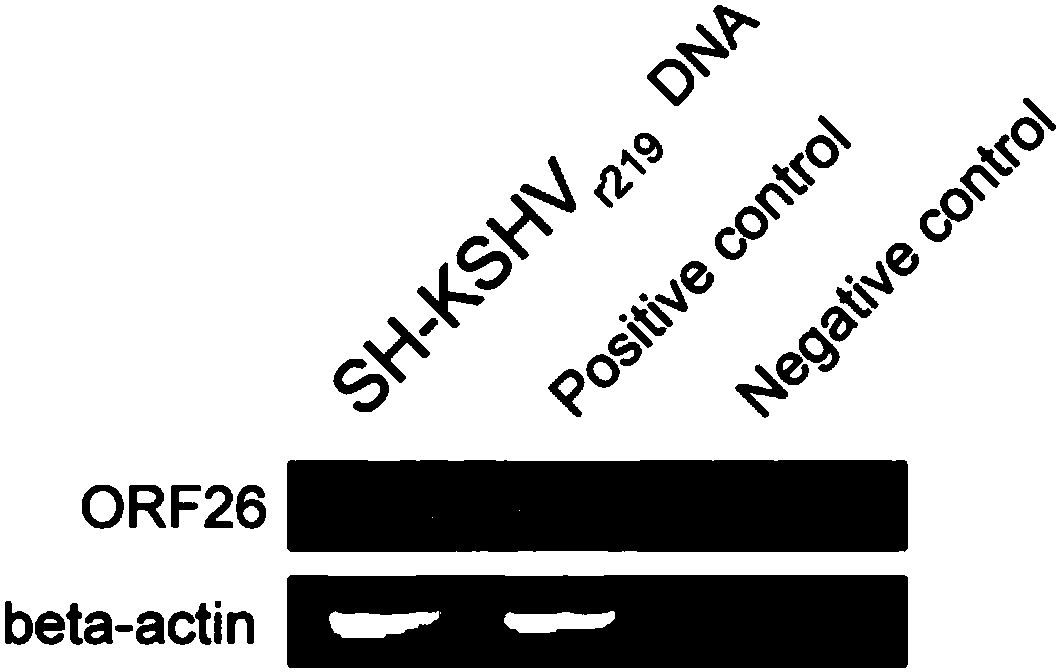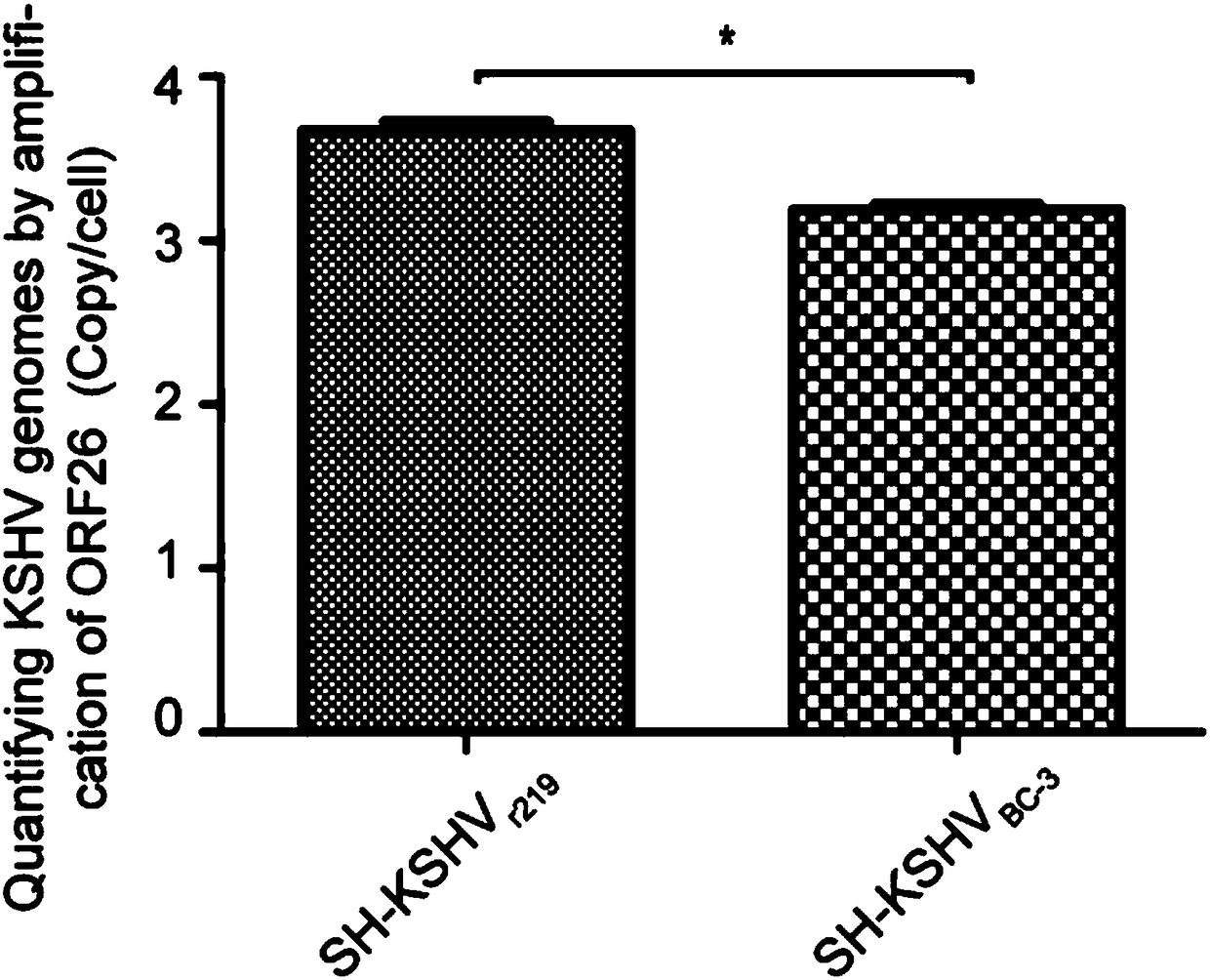Method for constructing neurons with spontaneous KSHV (Kaposi's Sarcoma-Associated Herpesvirus) lytic replication
A neuron cell, construction method technology, applied in animal cells, tumor/cancer cells, vertebrate cells, etc., can solve problems such as unclear central nervous system diseases
- Summary
- Abstract
- Description
- Claims
- Application Information
AI Technical Summary
Problems solved by technology
Method used
Image
Examples
Embodiment Construction
[0055] The technical solution of the present invention will be described in further detail below in conjunction with the accompanying drawings and specific embodiments.
[0056] Figure 1A : cultured cells, SH-SY5Y neuroblastoma cells, Vero219 cells, HEK293T cells were cultured with DMEM medium, 10% heat-inactivated fetal bovine serum (FBS), 50mg / ml streptomycin and 50U penicillin. Among them, 6 μg / ml of puromycin was added to the Vero219 cell culture medium for selection of stably infected recombinant rKSHV.219 cells. All cells were stored at 37°C, 5% CO 2 grown together under the same conditions. Replace every 3 days. The Vero219 cell line was subcultured and inoculated with 3.5×10 6 / T75 flask cells, medium 20 ml. Cells were infected with 5 ml of baculovirus Back50 expressing KSHV Rta for 4 hours. Baculovirus was removed and fresh medium containing 1.25 mM sodium butyrate was added. After 30 hours, the butyrate-containing medium was removed and fresh medium without pu...
PUM
 Login to View More
Login to View More Abstract
Description
Claims
Application Information
 Login to View More
Login to View More - R&D
- Intellectual Property
- Life Sciences
- Materials
- Tech Scout
- Unparalleled Data Quality
- Higher Quality Content
- 60% Fewer Hallucinations
Browse by: Latest US Patents, China's latest patents, Technical Efficacy Thesaurus, Application Domain, Technology Topic, Popular Technical Reports.
© 2025 PatSnap. All rights reserved.Legal|Privacy policy|Modern Slavery Act Transparency Statement|Sitemap|About US| Contact US: help@patsnap.com



